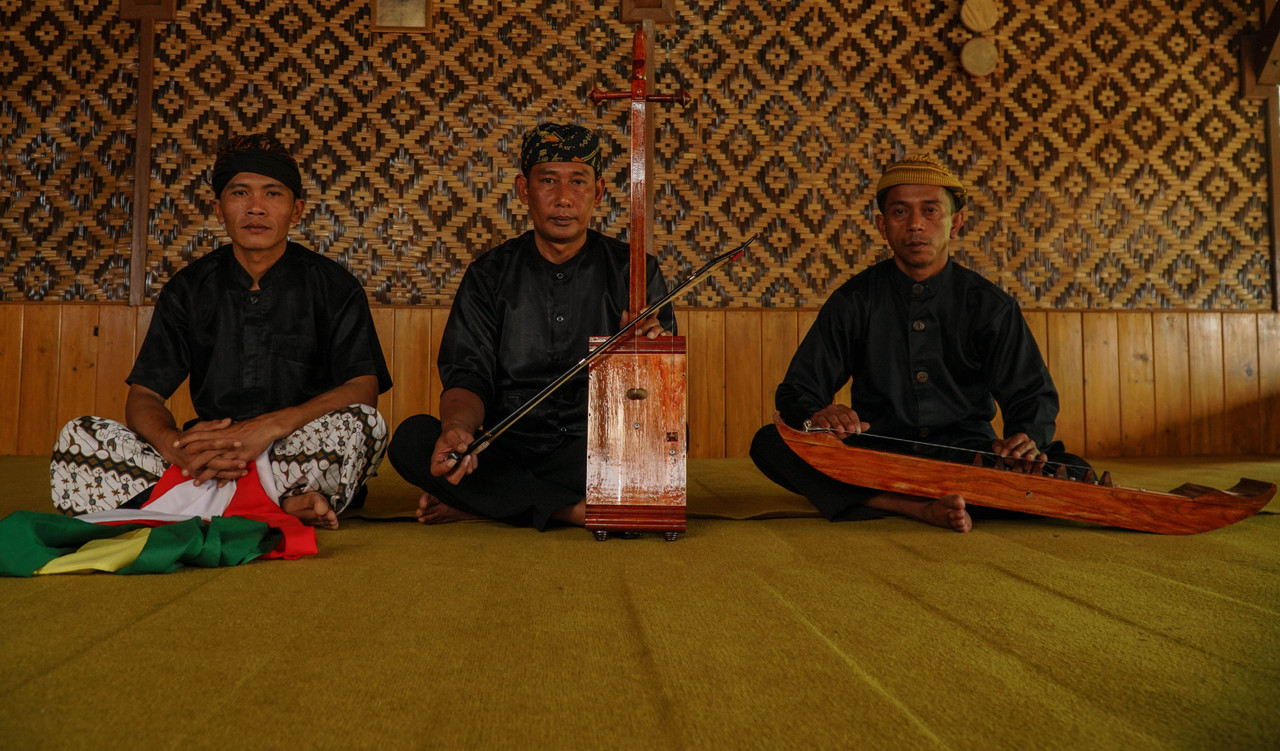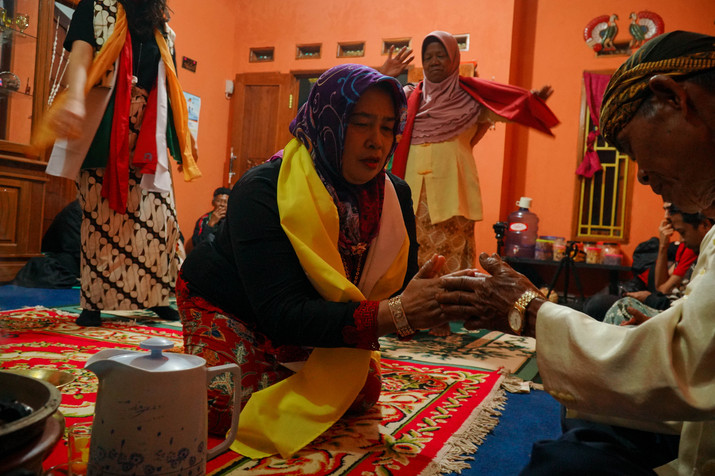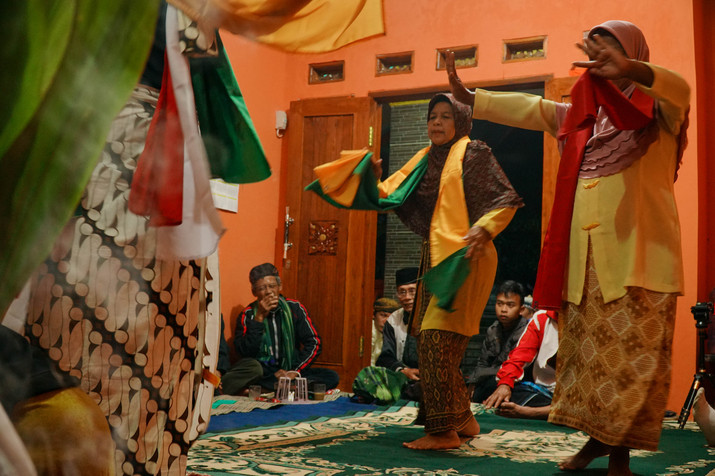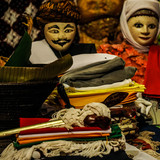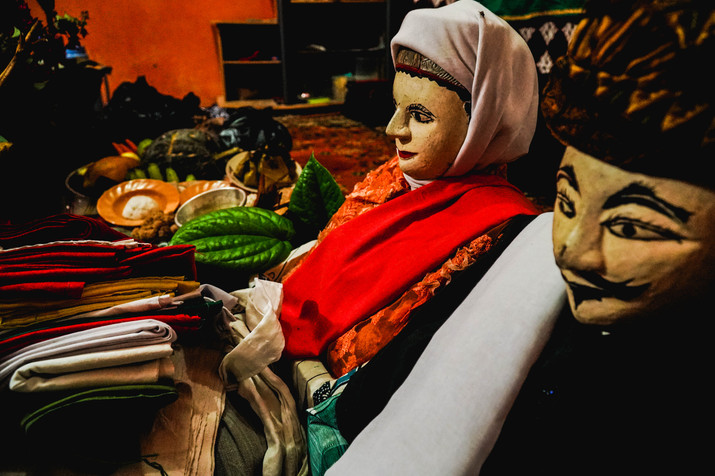
Sasajen and ritual garments. Photo: Gigi Priadji
Tarawangsa is a highly respected heritage in the village of Rancakalong, thus it is dubbed by the folks as “the art of
Ormatan”, the art of honoring. As a term, Tarawangsa can be interpreted as “
tatabeuhan rakyat wali nu salapan” (the people of the Nine Saints’ commands) – thereby referring to the Wali Sanga – or “
narawang ka nu Maha Kawasa” (to muse God). Tarawangsa is also seen as a special occasion to homage
Nyai Nu Geulis (the beautiful woman) – an ancient Sundanese, figurative term for food and especially rice – and
Nu Kasep (the handsome man) – a metaphorical expression referring to money. Besides being held at special ceremonies, such as
Ngalaksa and
bubur suro, tarawangsa is also performed after the annual rice harvest or other related celebrations such as thanksgiving and the inauguration of a new home.
It is difficult to establish when tarawangsa was born precisely. To date, although present, the documentation in this regard is somewhat sparse and almost all in Indonesian. This is due to the structure of the transmission of Sundanese culture, mainly based on orality and the practical diffusions of customs, as well as of critical studies. There are barely a dozen "official" teachers in the area, who, without any strictly formalized teaching method can count on a small group of students who are entrusted with the future of the practice. According to the teachers and the villages, the repertoire is roughly composed of forty-two pieces, which often, even without words, tell the story of Nyi Pohaci (and her legendary suicide to escape an unwanted marriage) and the magical generation of rice and all plants from her corpse* .
Almost all performative arts that have developed in Parahyangan (and almost within the entire archipelago) were heavily influenced by early Islamization of Indonesia. In the legends and founding myths of the people, this was accomplished mainly by
Wali Sanga, the nine saints who spread the new religion through the archipelago using arts and culture as a soft power-clothed trojan horse, thus gifting Rancakalong with tarawangsa.
Even if a certain connection between the saints and the appearance of tarawangsa could be attested, it is unlikely to prove that the genre in its core was brought by the holy personalities to the high, cold hills of the regency.
In fact, if certainly one of the central areas for tarawangsa’s development is the Rancakalong regency, we should also mention the Sumedang regency as the other pole of the historical discourse, giving the influence on the genre, by means of geographic vicinity, of the mythical Sunda Kingdom – ruled by the legendary king Prabu Siliwangi, symbol of the originary** Sundanese culture – and its traditions. At this point, for a balanced judgement, we could state that these two cultural currents were equally absorbed and made explicit not only in tarawangsa but also in other performative arts born on the land. In fact, tarawangsa was surely born also in the wake of Sunda Wiwitan: a form of animist philosophy and spirituality that distinguishes Sundanese ancient beliefs and that has now almost disappeared if not for some elements, ideas and rituals which keep on living absorbed in contemporary regional, syncretic Sundanese Islamic practice.
--
*
As with other legends and myths, there are always different versions of the story. While different people in different cultural contexts (i.e. Sundanese, Javanese and so on) may tell slightly dissimilar accounts, the symbolic core is often found in similar themes.
**
The term originary is not unproblematic and would place us amidst the complex and quite tedious interplay between the Ur-constructs of exogeny against indigeny. I use this term only in its emic significance, whence it is precisely used in its naive meaning by Sundanese people themselves.
